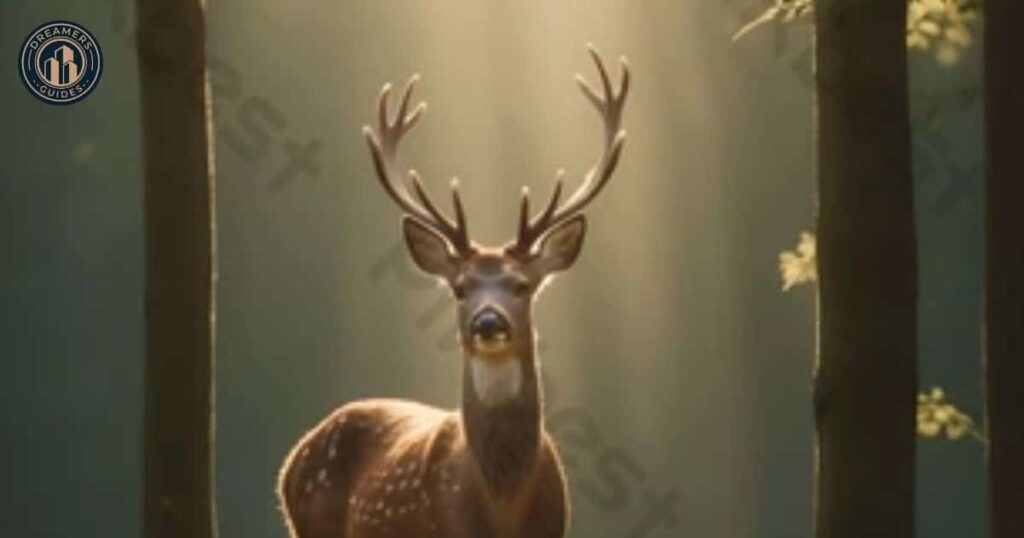
Have you ever been walking through the woods and felt a pair of eyes on you? Suddenly, you glance up and lock eyes with a deer, its gaze unwavering. While it might seem like a deer is staring directly at you out of malice or curiosity, their behavior is often driven by instinct and a need to understand their surroundings. This article will delve into the reasons behind deer staring, exploring their behavior, potential threats, and how to coexist peacefully with these fascinating creatures.
This exploration will cover the various reasons why deer might stare, including their natural curiosity and their need to assess potential threats. We’ll also discuss how to interpret deer behavior and how to interact with them safely and respectfully.
Why Deer Stare
Deer are prey animals, meaning they are naturally cautious and alert to potential danger. Their large, expressive eyes provide them with excellent peripheral vision, allowing them to detect movement and changes in their environment. This heightened awareness often leads to them staring at unfamiliar objects or individuals, including humans.
Instinctual Response
Staring is an instinctive response for deer, triggered by a need to gather information. Their gaze helps them assess the situation, determine if a potential threat exists, and plan their next move. This is particularly true in situations where a deer feels vulnerable or uncertain.
Lack of Fear
In some cases, deer may stare at humans because they are not afraid of us. This can occur if deer have become accustomed to human presence in their environment, such as in areas with frequent wildlife viewing or where deer are regularly fed. However, it’s important to remember that even seemingly tame deer can be unpredictable and should be treated with caution.
Deer Behavior

Understanding deer behavior is crucial for interpreting their stares and interacting with them safely. Deer are social animals that live in herds, led by a dominant male. They communicate through a variety of vocalizations, body language, and scent marking.
Body Language
Deer use their body language to convey a range of emotions, including fear, aggression, and curiosity. A deer that is feeling threatened may flatten its ears, raise its tail, and stomp its hooves. A curious deer may approach slowly, sniffing the air and tilting its head.
Vocalizations
Deer communicate through a variety of sounds, including bleats, grunts, and snorts. These vocalizations can signal alarm, distress, or even affection.
Scent Marking
Deer use scent marking to establish their territory and communicate with other deer. They rub their bodies against trees and other objects, leaving behind a scent that other deer can detect.
Curiosity and Observation
One of the primary reasons deer stare at humans is out of curiosity. They are naturally inquisitive creatures and may be fascinated by our appearance, movements, and behavior. Their large eyes and excellent vision allow them to observe us in detail, trying to understand who we are and what we might do.
Learning and Adaptation
Deer are intelligent animals that learn from their experiences. If a deer has had positive interactions with humans in the past, it may be more likely to approach and stare out of curiosity. However, if a deer has had negative experiences with humans, it will likely be more wary and avoid eye contact.
Environmental Factors
The environment can also influence a deer’s behavior. For example, a deer that is feeling stressed or threatened by other animals may be more likely to stare at humans as a way of assessing the situation.
Assessing Threats

While curiosity can drive deer to stare, their gaze can also be a sign of assessing potential threats. Deer are constantly on the lookout for danger, and their large eyes help them scan their surroundings for predators or other potential hazards.
Interpreting Body Language
A deer’s body language can provide clues about whether it perceives a threat. If a deer is standing with its ears flattened, tail raised, and hooves stomping, it is likely feeling threatened and may be preparing to flee or defend itself.
Maintaining Distance
If you encounter a deer that appears to be assessing you as a threat, it’s important to maintain a safe distance and avoid making sudden movements. Slowly back away while facing the deer and avoid direct eye contact.
Coexisting with Deer
Deer are beautiful and fascinating creatures, but it’s important to remember that they are wild animals and should be treated with respect. Here are some tips for coexisting peacefully with deer:
Avoid Feeding Deer
Feeding deer can habituate them to humans and make them more likely to approach, which can lead to dangerous encounters.
Secure Your Property
Deer can damage gardens and landscaping. Use fencing and other deterrents to protect your property from deer.
Be Aware of Your Surroundings
When hiking or walking in areas where deer are common, be aware of your surroundings and listen for any sounds that might indicate deer presence.
Respect Their Space
If you encounter a deer, give it plenty of space and avoid making sudden movements. Let the deer approach you if it chooses, but do not try to touch or feed it.
Conclusion
Deer staring at you is a natural behavior driven by curiosity, a need to assess threats, and their instinctual responses. Understanding their behavior and respecting their space is crucial for coexisting peacefully with these fascinating creatures. By following these tips, you can appreciate deer from a safe distance and contribute to their well-being in the wild.
